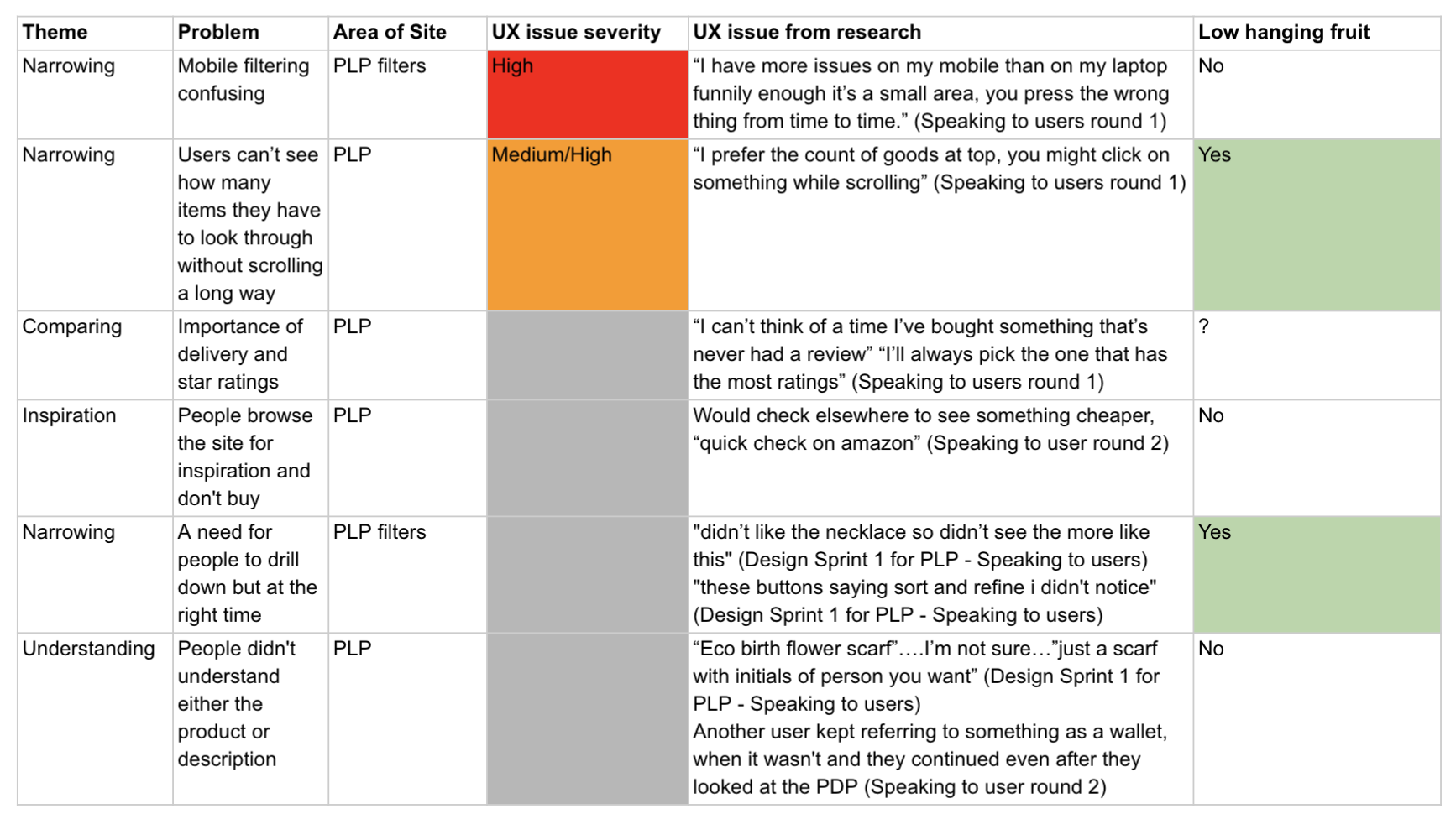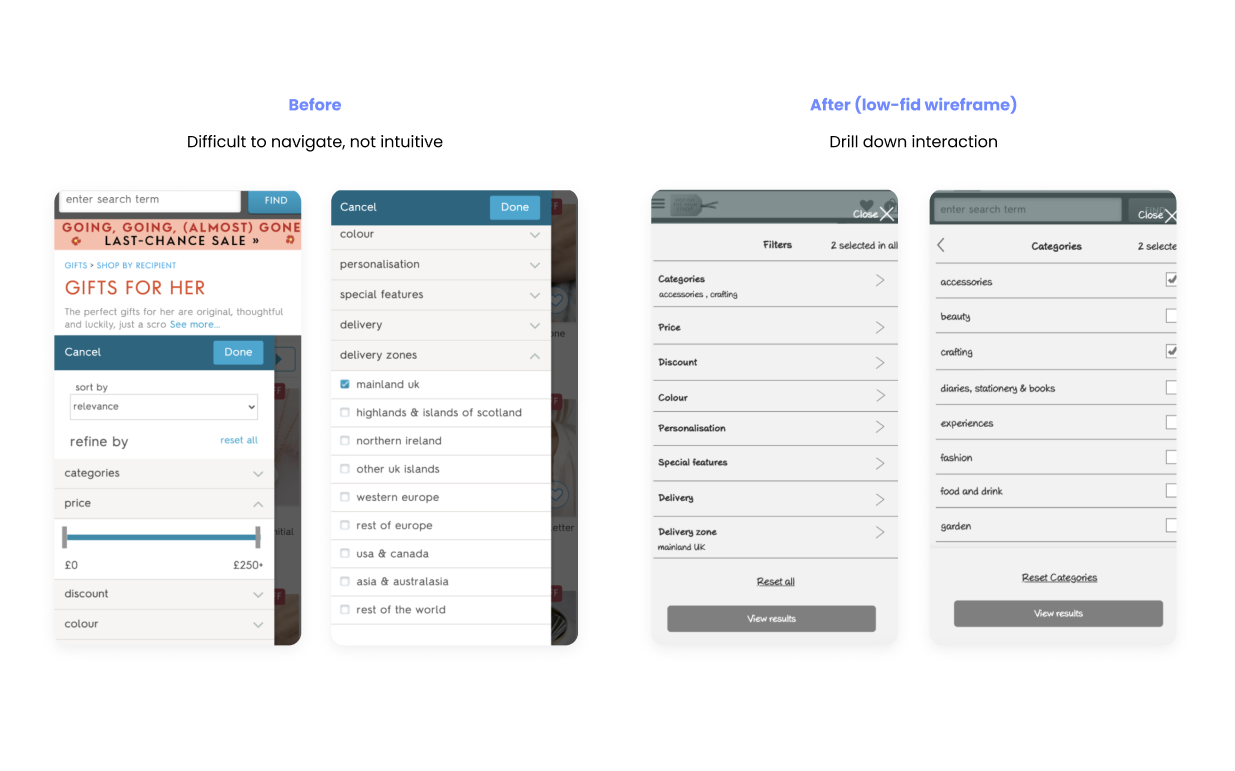Notonthehighstreet.com is an e-commerce marketplace with handcrafted and bespoke sellers of all sizes (similar to Etsy but more vetted). I was in charge of leading the UX design for several high-traffic pages during a major re-platforming initiative. These pages collectively receive 74% of the website’s traffic. In this case study, I will focus on a category of pages called Product Listing Pages (PLP).

